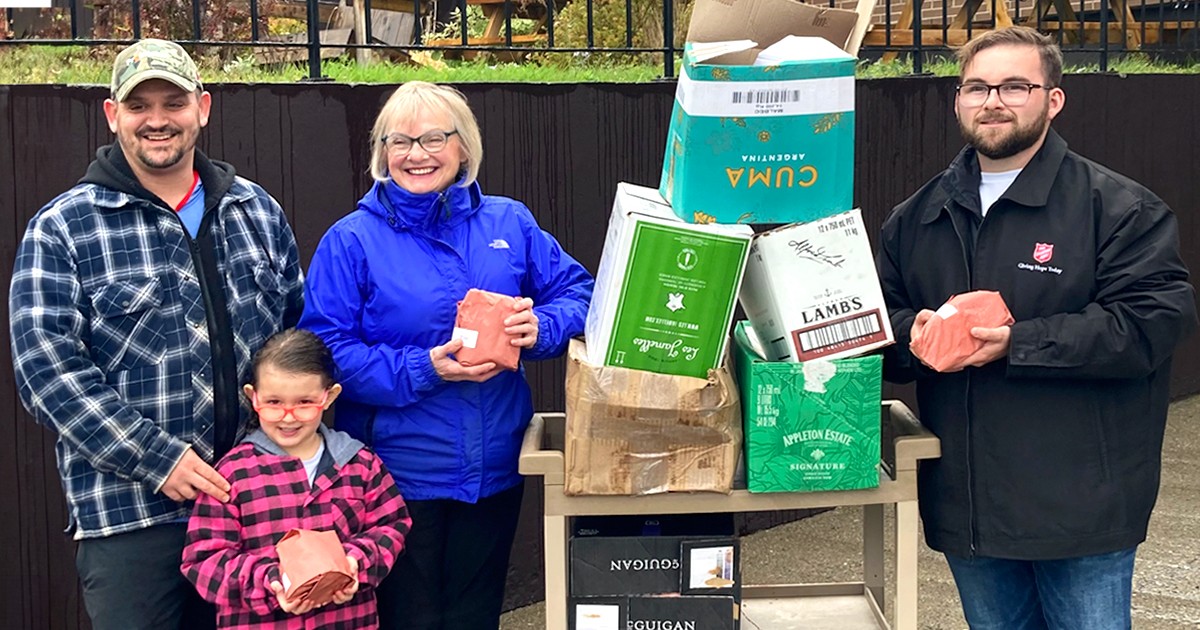With a staff of just seven people at the warehouse, it's an amazing feat—one which garnered Prince George Community Church a local environmental leadership award in the year following the warehouse's construction.
For Captain Neil Wilkinson, corps officer, this kind of leadership should come naturally to The Salvation Army.
“The Army has the opportunity to be a forerunner in recycling,” he says. “We've always been a forerunner—when we started our thrift stores 100 years ago, it was something that nobody else was doing. Ramping up our recycling ministry is just a way for us to naturally augment what we already do really well.”
The corps' recycling operations generate $250,000 annually, which helps support its social services. But more than a fundraising tool, the warehouse is part of the corps' commitment to stewardship.
“The earth is the Lord's and everything in it,” Captain Wilkinson says, “so we need to be the ones who are setting the pace for the rest of the world.”
The Recycling Process
Opened in 2012, the recycling warehouse is 668 square metres—112 square metres devoted to receiving and rough sorting, 278 to processing donations for the thrift store and 278 to recycling.
The Army recycles textiles (e.g. clothing, bedding, curtains), electronics and metals. When they are received, the textiles are sorted by type and grade and then baled in 27,216-kilogram bundles. Those bundles are tendered to various textile recyclers across North America, who bid on the product; the highest bid gets the load. These textile recyclers further sort and refine these bundles into 45-kilogram bales, which are sent overseas and then can be purchased by locals who remarket the material in their own communities.
The electronics are palletized and sent to Encorp, the province's recycling program, and the metals are recycled locally in Prince George.
The warehouse tries to ensure that no product goes to waste.
“When we have donors who are giving us all kinds of stuff from their houses, donor intent is that we're going to make the most of the donation,” Captain Wilkinson says. “Even if it's something that may not be intrinsically of value for one of our thrift stores, I think that we still have an obligation to honour donor intent and make the most of that donation, not just dispose of it because we can't use it.”
Managing the Earth
While the corps in Prince George has been recycling for many years, the warehouse allows them to recycle much more than they were able to previously. When the corps opened its recycling warehouse three years ago, it was in response to an overwhelming amount of donations.
“We have excellent support from the community, and we're always trying to build more awareness within the community,” he says. “The more people who know about the recycling efforts of the Army, the more people can support us and the more product can be processed. This means more protection for the environment and more revenue for us for the community work that we do.”
As Prince George continues its commitment to protecting the environment, Captain Wilkinson hopes that green initiatives will continue to be embraced by the wider Salvation Army.
“When it comes to managing the earth, I think stewardship is particularly important because, how long before the next generation starts digging up our landfills?” he says. “The garbage that we bury—where does it go? It can be recycled. We can only keep burying stuff in the ground for so long before it becomes a very big problem.”
Recycling by the Numbers
- Across Canada, The Salvation Army operates 255 thrift stores
- 145 are operated by corps
- 110 are run by National Recycling Operations (NRO)
Last year, NRO thrift stores:
- Made over $88.3 million in sales
- Diverted 30.5 million kilograms of household waste from local landfills
- Raised $73,068.52 and sent 332 kids to camp










Leave a Comment